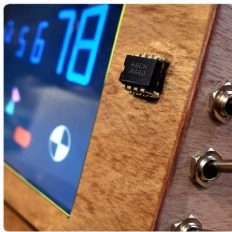Regardless of what your opinion is on cult-classic movies that got mixed-to-negative box office reviews when they were released, you have to admire the ones that went all out on practical effects and full-size constructions rather than CGI and scale models. Case in point the 1976 satirical comedy film The Big Bus that featured an absolutely massive articulated double-decker bus. With 32 wheels and multiple levels you’d think that a scale model would be used since most interior shots were done in the studio, but instead they built a real bus.
In this video by [Timeworn lengends] the genesis and details of the vehicle are covered. At the core of this road-worthy bus are two cabover International trucks, which were temporarily attached with a quick-release mechanism and required a second driver for the rear section who followed radio instructions for steering. In 1976 dollars, the entire bus prop cost between $250,000 and $500,000 USD to construct — making it one of the most expensive props ever made, especially considering the relatively low budget.
A fiberglass shell gave the bus its characteristic design, with the over the top ‘nuclear reactor’ propulsion befitting the comedy satire. Although the bowling alley and swimming pool were not really inside the bus, there was a functional bar installed along with the functional cockpit at the front.
Despite the movie flopping at the box office and critics being very mixed on its merits, it’s hard to deny that this bus prop is very unique and probably has a big part in why the movie has become a cult classic. As for the closest real-life equivalent, there is the articulated, double-decker Neoplan Jumbocruiser, which had its own troubled history.
Continue reading “The Full-Sized 32-Wheeled, Articulated Bus Built For A 1976 Movie”



















